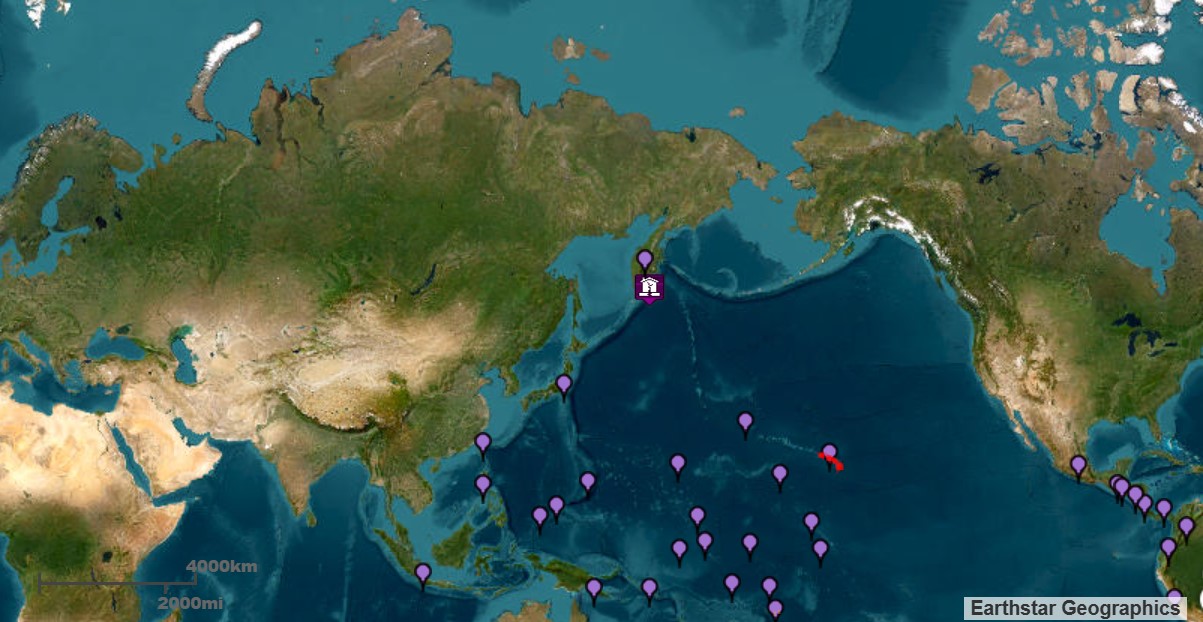Pacific Region Exchanges escaped damage after a tsunami warning was issued for most of the region following a high-magnitude earthquake off the Russia coast.
According to the U.S. Geological Survey, the quake, which occurred Wednesday evening local time off the coast of Russia’s Kamchatka Peninsula, measured at 8.8 on the Richter scale—one of the strongest earthquakes recorded.
Although the impact was minimal at PAC Exchanges, tsunami warnings affected operations throughout the region, from Okinawa to American Samoa, which are roughly 5,000 miles from each other. Pacific Region Senior Vice President Jesse Martinez said the biggest impact was on Hawaii Exchanges, where customers were buying up fuel, food and water.
As of Wednesday evening Japan time, Hawaii and Samoa were under a tsunami advisory. Kwajalein, where the Exchange operates two stores about 2,400 miles southwest of Honolulu, was at bulletin status. Mainland Japan was under a Pacific coastline warning and advisory. All-clears had been issued for Guam and Okinawa.
In Hawaii, most Exchanges sold out of bottled water and were low on fuel because of the spike in demand, because of fuel carriers pausing operations during advisories and because of gridlock on the roads as people evacuated to higher ground. Vice President of Fuel Operations Steven Davalos said Wednesday afternoon Dallas time that normal fuel operations had resumed.
An emergency order was requested for more water, and region leaders were working with HQ. Stores were also subject to closure as installations closed.
Out of caution, command on Kwajalein closed both stores there at 6 p.m. Wednesday local time. An oil terminal was closed in Okinawa, but fuel is running again after the short shutdown.
Although tsunami warnings were issued for the U.S. West Coast including Alaska, no Western Region exchanges or facilities were affected.
Exchanges on both sides of the Pacific have been affected by even more powerful earthquakes.
In March 2011, an earthquake registering 9.0 on the Richter scale struck Honshu, Japan’s largest island. The quake, with the epicenter about 80 miles east of Sendai in the Miyagi prefecture, generated a tsunami that devastated Honshu’s northeastern coast. Three Exchange locations on Honshu were affected by power outages and closed roads and faced the challenges of resupplying facilities. Senior leaders, managers and associates quickly came up with plans to keep stores open—after making sure that everyone was safe. Read more about it here.
In March 1964, a 9.2. magnitude quake (the strongest ever measured in the United States) happened in Anchorage, Alaska, causing damage at the Elmendorf AFB main Exchange—which held its grand opening the day before the quake hit. Read more about it here.






Leave a Reply